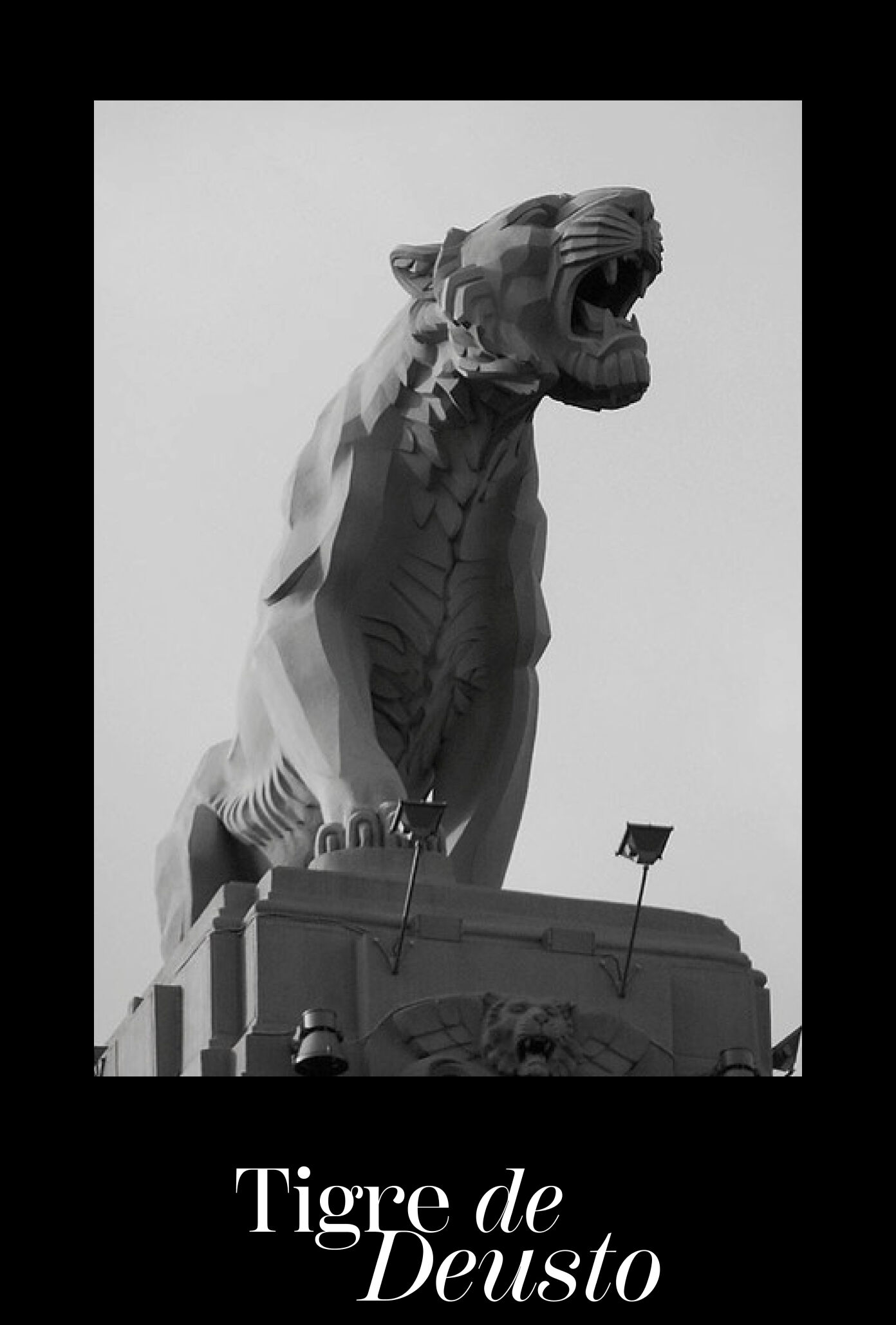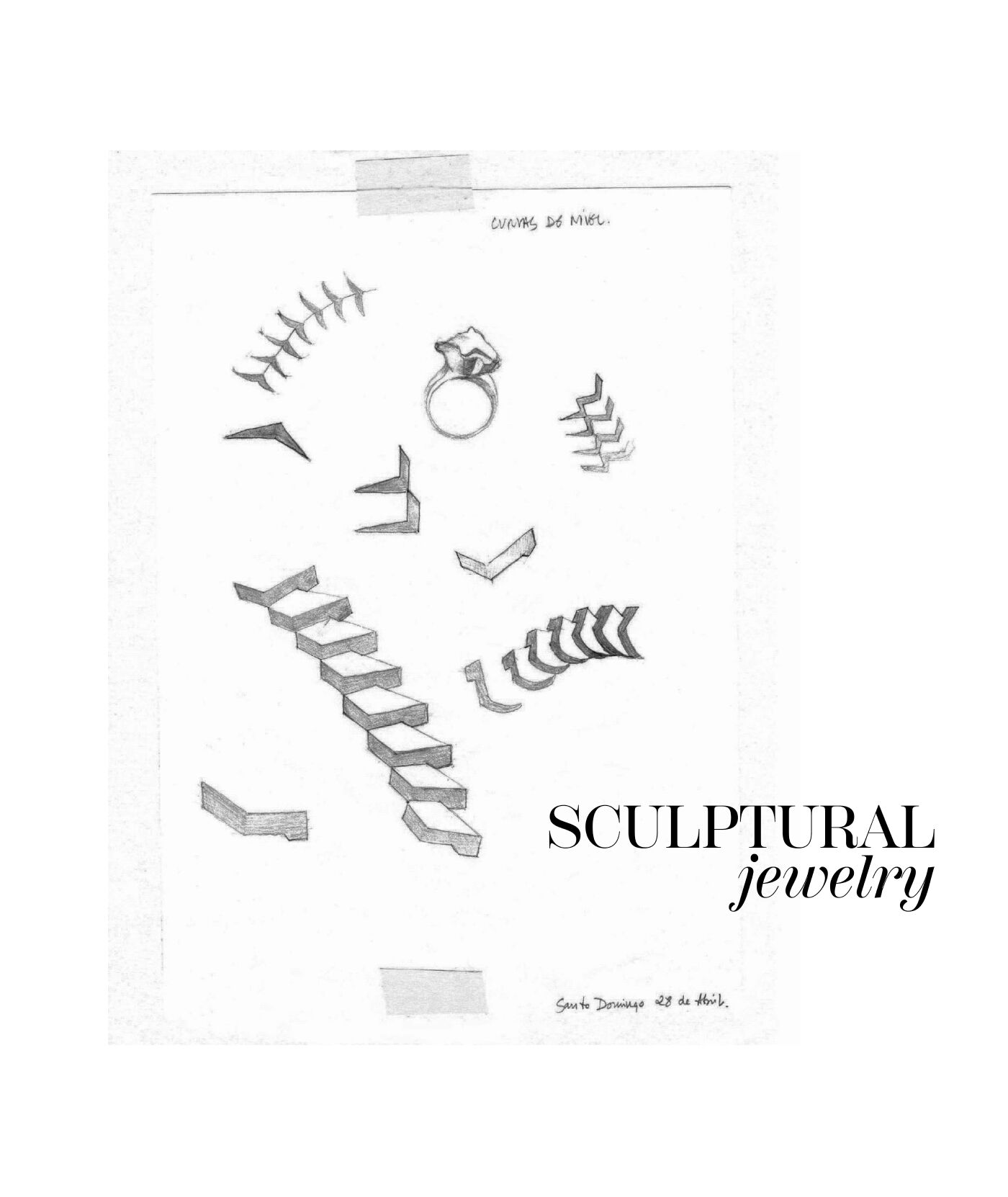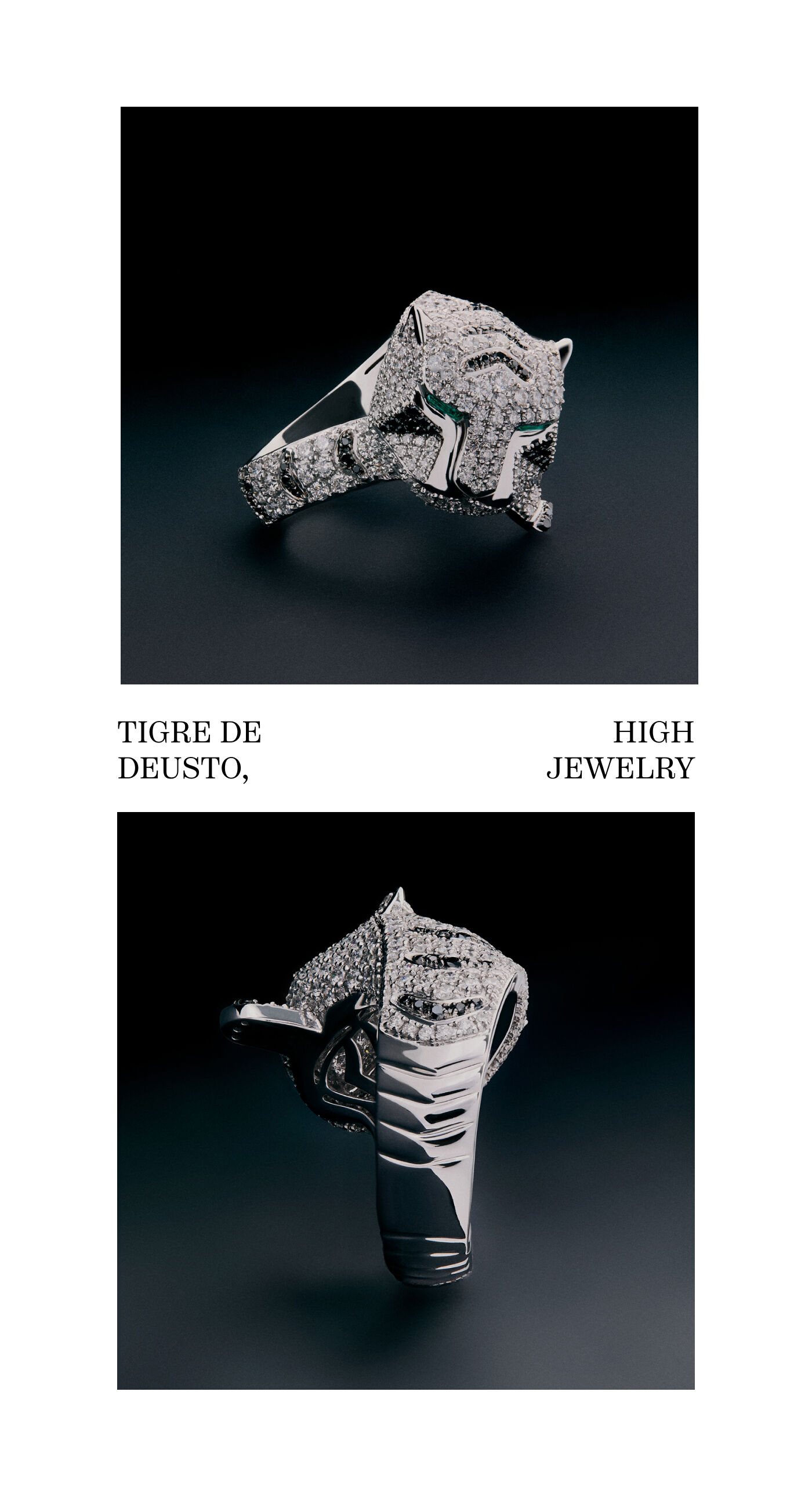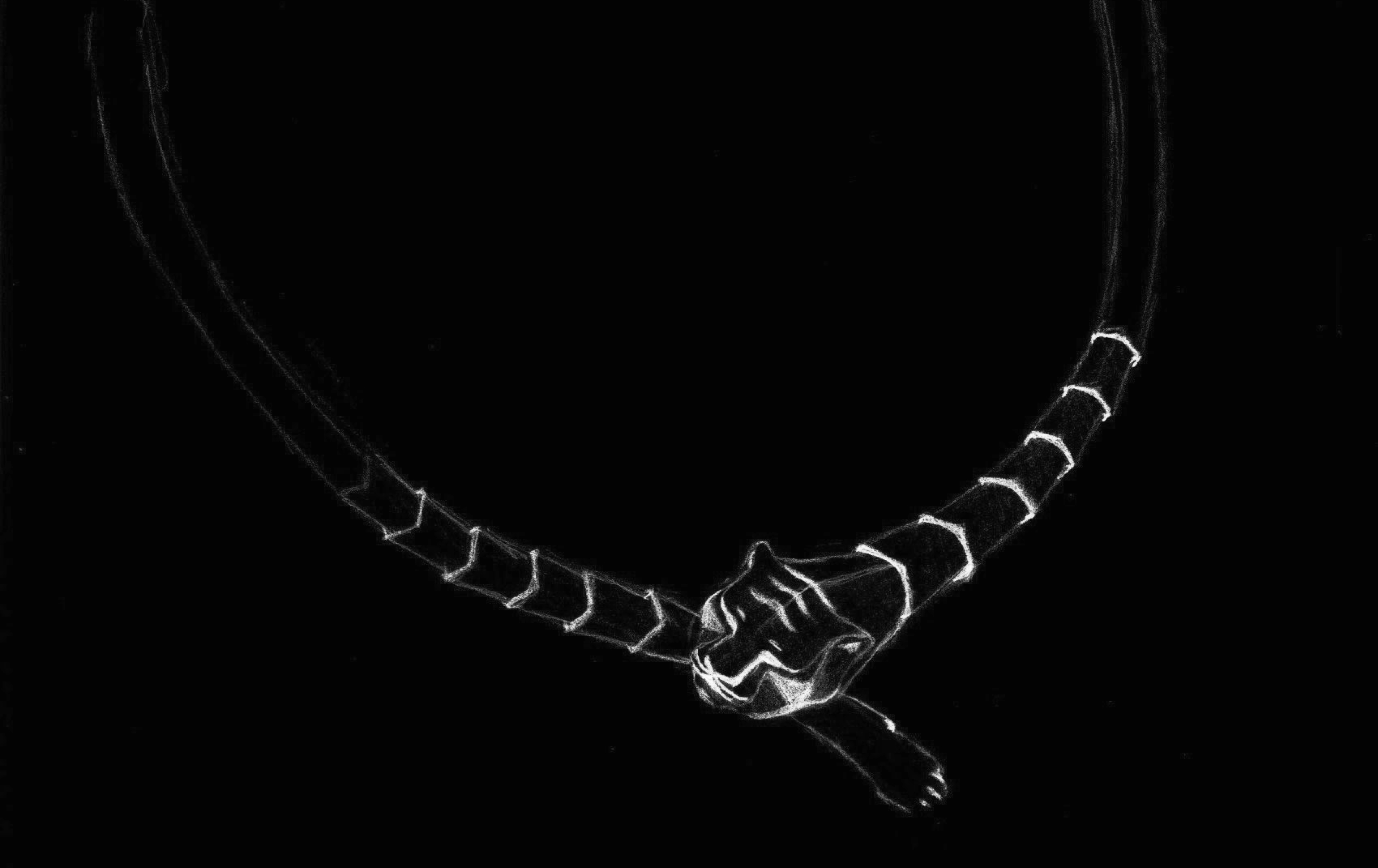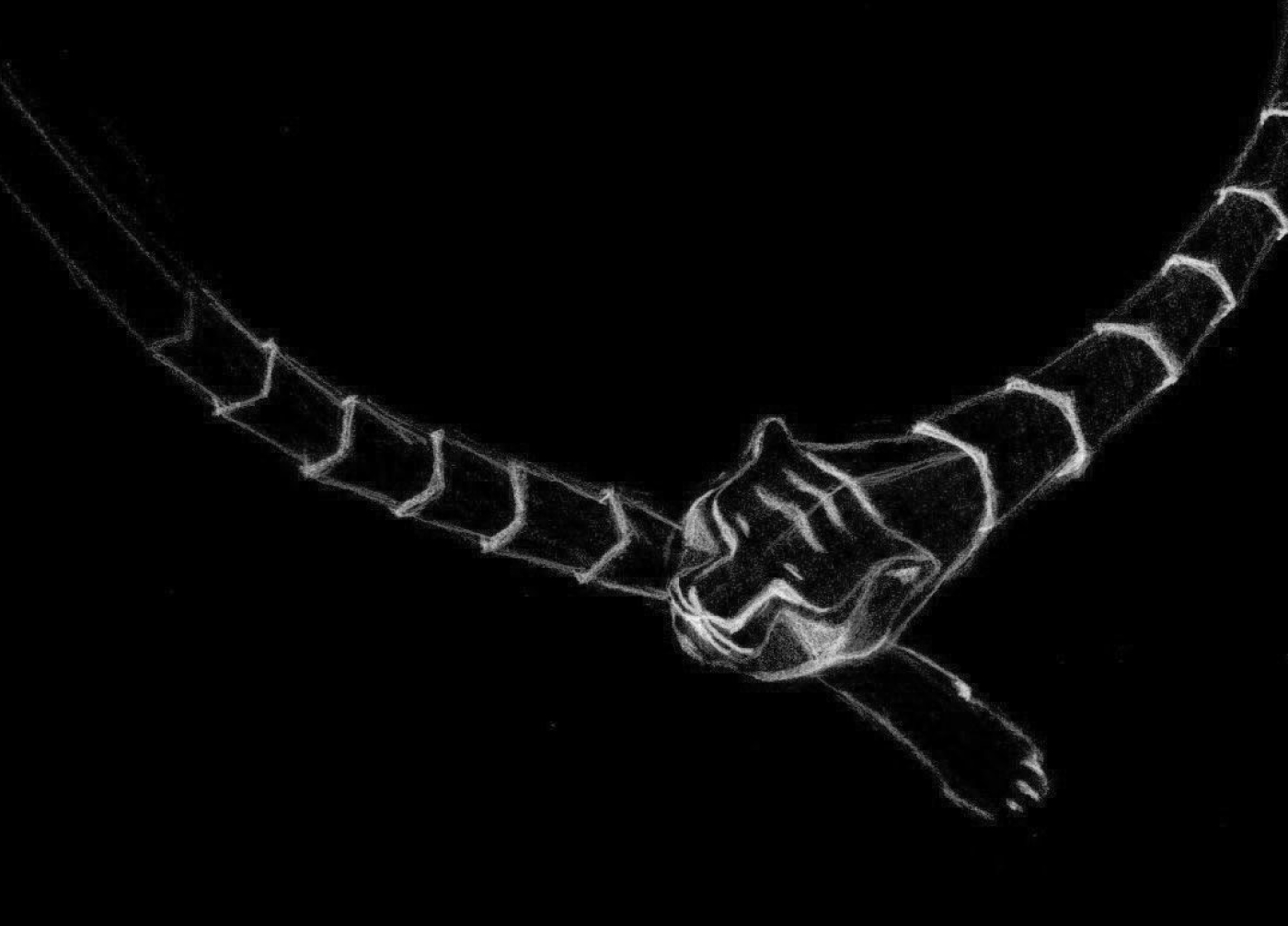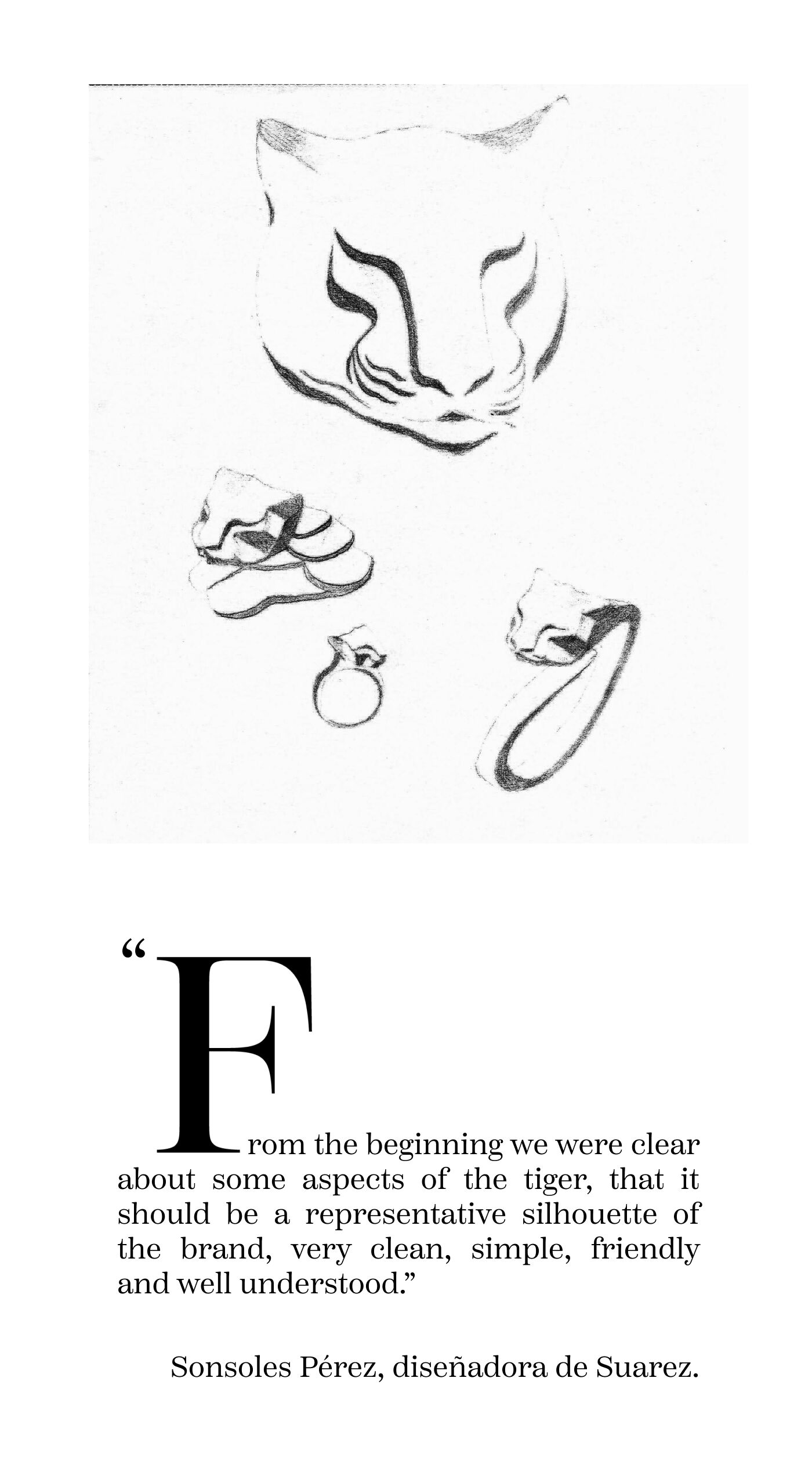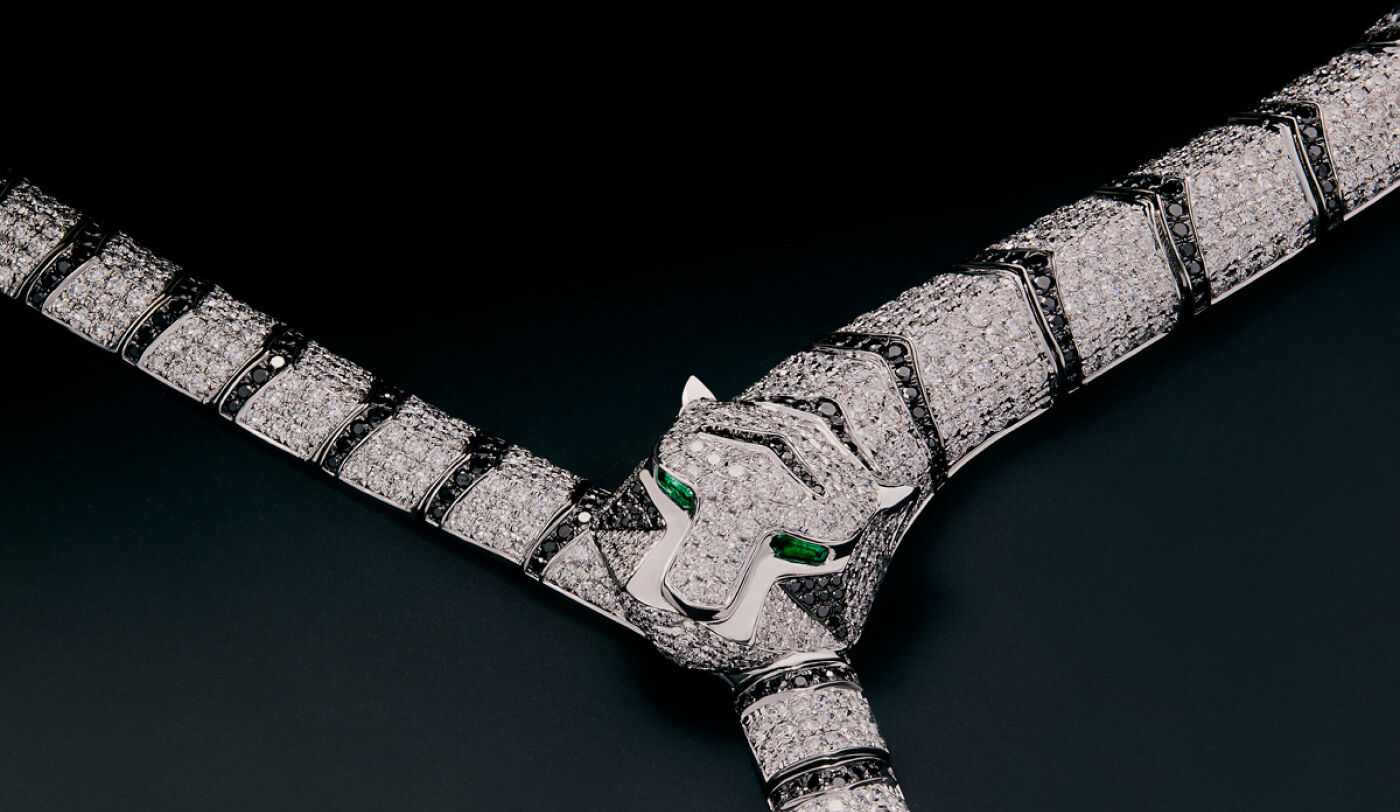All the details about our Tigre de Deusto collection via from an exclusive interview with our design team and multidisciplinary artist Sandra Rein.
We are pleased to present Tigre de Deusto, our jewelry collection inspired by the iconic sculpture of the same name by Joaquín Lucarini. An icon of Bilbao architecture closely connected with Suarez since they share the city of origin and year of creation.
The characteristic geometric lines of Art Deco that appear in the tiger sculpture serve on this occasion as a guide to shape the complex structure of each jewel. A new opportunity to analyze and rescue elements that have been part of our history to transform them into icons of contemporary jewelry.
For the creation of the different jewelry in the collection, the Suarez design team, with Sonsoles Pérez at the head of the project, relied on the unrelated vision of jewelry and without restrictions of the multidisciplinary artist Sandra Rein. A necessary exercise due to the highly sculptural nature of the collection.
Where did the idea of creating a collection inspired by the sculpture of the Tiger of Deusto come from?
Sonsoles: The inspiration for our project emerged from the creative department, driven by the current trend of exploring origins to reinforce Suarez's identity.
We began a study of our house from its beginnings, which took us to Bilbao. During this process, we began to notice that many of our historic designs had a connection to the architecture of this city. It was then when we saw the tiger in one of the most emblematic buildings in Bilbao and therefore the opportunity to integrate his figure into our universe.
What were the first steps in developing this collection?
Sonsoles: After presenting the idea of the project, we contacted Sandra and provided her with all the information about the Tigre de Deusto so that she could get inspired and start sculpting a representative piece.
We decided not to influence her in terms of jewelry so as not to limit her creativity. Once Sandra began to shape it, we held weekly meetings to continue advancing the process.
What relationship would you say the world of sculpture and jewelry have?
Sonsoles: Sculpture and jewelry are closely related. In both disciplines a work is created, whether by carving or modeling. In fact, each Suarez jewel can be considered a miniature sculpture, molded by the hand of a master jeweler.
How were the first contacts between you to start planning the collection?
Sandra: From the beginning I felt very comfortable with the entire team, they asked me, as a sculptor, inspired by the Deusto tiger, to freely develop the head of a tiger and later the body.
The way to present it could be based on drawings or developing a sculpture. Finally I decided to start working with Fimo due to the scale and level of detail that I needed to capture relying on drawings since for me they are essential when working.
Sandra, what were the elements that you paid most attention to when “raising” that tiger on which to start developing the designs?
When you draw you realize that most of our faces are full of angles and planes that emit lights and shadows that give us one expression or another. The tiger had very decisive shadows, that's why I decided to approach it as if the face were level measurements, so that the light would build the expression.
Why was it decided to collaborate with someone outside of Suarez like Sandra to bring the collection to life?
Sonsoles: Given the highly sculptural nature of the piece, we chose to seek a vision completely detached from jewelry, without restrictions. At Suarez we believe that, by working with artists from different disciplines, wonderful works can be created.
What were the first steps like from observing the sculpture to being able to make the first sketches?
Sonsoles: From the beginning we were clear about some aspects of the tiger, that it was a representative silhouette of the brand, very clean, simple, friendly and well understood. We tested elements, shapes and textures characteristic of the sculpture.
Sandra: The sculpture is full of planes, but it couldn't be something very complicated since on such a small scale they can clutter the information, so we defined the lines of expression so that they were few and decisive.
And how did the rest of the process unfold?
Sonsoles: We worked simultaneously, Sandra drew and modeled in fimo, while I modeled with a 3D sculpture program. In this way, she transformed the sculptural approach of her proposal into a piece of jewelry.
We refined each of the designs until we reached two key elements: the tiger's head and the tail. The head is the main element of the sculpture, while the tail provides an organic shape that offers numerous possibilities in jewelry design.
Sandra: When we defined the tiger's face I began to collaborate more with Sonsoles outside, sculpting everything on his screen. From the initial head of level dimensions we moved on to a sculpture to be able to adapt it to the different pieces of jewelry that made up the collection.
This one goes to you Sonsoles, how was the process of converting the final designs that Sandra proposed to 3D?
Creating a piece of jewelry from a sculpture, like the tiger, which is significantly larger, is a challenge. For this reason, we focused on carefully defining the head, since it had to be represented in all types and sizes of jewelry. Additionally, it is important to note that each facet is set in pavé, adding an additional level of complexity and detail to the piece.
When it came to the fine jewelry pieces, each required specific considerations: For the ring, we prioritized ensuring it had optimal dimensions and an organic shape that fit perfectly on the hand; As for the bracelet, we opted for a rigid design with a traditional hidden tongue closure, to preserve the harmony of the piece.
For the earrings, we carefully review the weight and the possibility of making a removable piece, with the option of wearing a single part of the earring or the entire earring; The necklace, a highly crafted piece, is made up of numerous parts assembled within each other, allowing it to move and fit comfortably around the neck.
Sonsoles, what would you say has been the most difficult thing to develop in this collection on a technical level?
Sonsoles: Refine the tiger's facial expression, ensure fluid articulation of the necklace, adapt the tiger's body to each specific jewel, meticulously set each piece in pavé, hide the clasps to maintain aesthetics, design the earrings detachably and make a lining for each piece in order to enhance its beauty.
Sandra, this has actually been your first contact with the world of jewelry. How have you felt working with the Suarez team making the collection?
I have felt great since the team that makes it up is very knowledgeable and fantastic people, it has been a pleasure.
For this collection, other designs have also been developed that do not belong to the universe of High Jewelry. What have been the biggest challenges when developing said jewelry in yellow gold and diamonds?
Sonsoles: The biggest challenge of this decline was to mark the shape and facets well. The work in the workshop with the final polishing of the pieces must be meticulous in each one of them.
“The most important thing in yellow gold and diamond jewelry was not to lose the essence and develop pieces that continued to show the meticulous work that exists behind each design.”
Sandra Rein, sculptor and multidisciplinary artist.
Looking at the finished pieces, how would you describe the essence of this collection in one sentence?
Sonsoles: It is a collection that radiates strength and elegance, empowering the woman who wears it.
Sandra: Gentle but forceful subtlety.
From Suarez, we want to make a special mention and thank Leonardo Lucarini, a direct descendant of the creator of the sculpture of the Tiger of Deusto, Joaquín Lucarini, for having made it possible for this collection to become a reality today.

